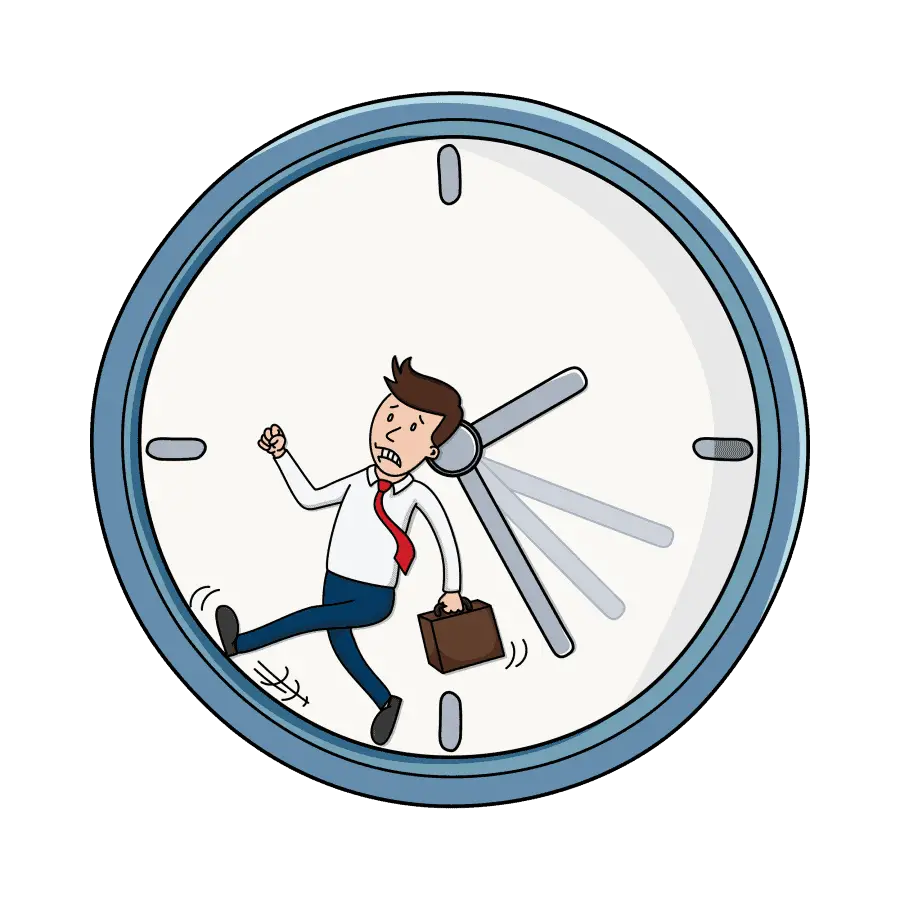
Looking into learning a new language? There are so many reasons to take the time to learn a new language and expand your vocabulary. However, with a full workday, family life, and obligations, it can be hard to find the time. When you can find the time, you might wonder if it’s enough to make a difference. Can you learn a language in only 30 minutes a day?
Yes, you can learn a language by taking only 30 minutes a day to practice. The key to succeeding is to remain motivated and be as consistent as possible. It is more important to train your new language every day for short intervals than in one several hour period once per week.
With that in mind, and only 30 minutes a day devoted to learning a language, you will be looking at short lesson plans. A new language can be a huge undertaking, and when trying to do the math, it might seem like it will take ages to even be barely competent. How long should you expect it to take to learn a language fluently? Let’s find out.
Contents
How Long Does It Take to Learn a Language Fluently?
There is no universal clear cut answer as to how long one can expect it to take for them to become bilingual. Many websites and organizations, from the CIA and FSI themselves to online learning tools, will give you estimates anywhere from 500 hours to 2200 hours. However, the length of time it takes actually varies on a person to person situational basis.
The U.S. State Department’s has a dedicated wing to language learning for the Foreign Service Institute. When answering the question, “Does English make the list of the most difficult languages?” I lay out the time it takes to learn the world’s most difficult languages according to the state department in my detailed article here.
30 Minutes A Day To Native Level Fluency?
This may in the realm of possibility after many years of consistent study. The fundamental structure of language learning is just consistent time under pressure. So it is possible to reach this level with a laser focused learning plan and other immersion techniques as reinforcement.
Yet, is this probable. Not really. The amount of time in the beginning to go from knowing nothing to something is relatively small. Once these beginning levels have been reached, the next become exponentially longer. This happens with every level of competency gained. You can imagine that native level fluency could literally take a decade or more with this schedule.
Let me stop here and ask a simple question that some may not have considered. Is it necessary to achieve this level of language skill? The answer in nearly every situation will be, “No.”
The amount of time and effort it would take to erase an accent totally and learn a language to the level of someone who has used it since birth every day would not be worth it in most situations. So every student should set goals for proficiency that would be useful in their lives and not an unnecessarily lofty level.
30 Minutes A Day To Conversational Fluency!
Could someone reach fluency in conversation and be able to communicate in nearly every situation with comfort and ease studying 30 minutes per day? This is a very real possibility for every language learner.
Not only is this much more attainable, but it is also infinitely more practical. Even actors that want to play a native speaker will not have to come up with proper grammar, idioms, and vocabulary on the fly. They will simply have to mimic accent and delivery in a limited, memorized set of lines.
For those communicating in a second language for most every reason will not be held to ‘native’ standards. Those you are communicating with will not demand perfection. They will appreciate proficiency and good communication skills, but perfection is something no one will be concerned with.
Everyone Will Be Satisfied With Different Levels And Varied Completion Times
Everyone learns at different speeds and has different affinities that make certain things easier or harder to learn. Just ask around your workplace. Some people learn visually, some auditory. There are people that will tell you how much they hate math, and others will claim composition is the worst course on the planet.
If you have a high interest in learning languages, being diligent in lesson taking and practice may see you learning far faster than others trying to learn the same language. Simultaneously, skipping lessons or losing motivation can have you stuck on the same lesson every time you try. Consistency and dedication can help you see it through!
How to Learn a Language Effectively In 30 Minutes Per Day
If you are trying to learn by yourself, it can be hard to find answers on where to start or feel supported. While learning with a group can make it fun, you can still learn all by yourself. To do so, there are some steps you should take to make sure you reach your language goal and stay the course.
I recommend what our family has used to learn several languages. You can even try out the program with these great free trials… Spanish, Japanese, French, or German.
Develop An Efficient 30 Minute A Day Strategy

Everyone learns differently. With this in mind, consider how you best learn to accomplish tasks that are thrown your way. With this information, you can make a plan to create the best lesson plan to use during your thirty-minute breaks in the car, at home, or even waiting for transportation. This ensures the information sticks and that you can accomplish your lesson handily.
If you are an auditory learner, maybe a podcast or a language learning cd may be right for you. If you are visual, you may consider flashcards or apps that provide short quick lessons and recognition. If a mix of both, you may find PC based programs that speak while you click images to be the best course.
Remember learning a language and retaining it is all about how you will make it happen. No two people learn the same, so finding the best lesson plan for you and making a strategy can ensure that you make the most of your time.
Try to Hear the Language in Real Situations
Let’s be real: like the program I recommended above, language programs out there are great at teaching phrases, vocabulary, and tenses. While that is great, this is a controlled situation where the response is dictated ahead of time. When you go to practice with a stranger, you can be caught off guard when their response deviates from the recorded lesson scripts.
This doesn’t mean that the programs designed to teach are not practical. The opposite is true. Though, this is only the how to portion of the process. Without this foundation real and active conversations are exponentially harder. Yet, these systems are only the preparation for actual conversation and listening experience.
By watching TV in that language, listening to podcasts, or even music from that country, you can help your brain recognize words and solidify contexts as you go. Languages are not two dimensional. They are living mimicking the people that speak them. You do not have to go full immersion to get this effect either: just turn on the language when you remember!
Though this may or may not be in your regular 30 minutes of directed study every day, it can boost your understanding and speaking exponentially. And remember, consistency is the key.
Be Sure to Actively And Passively Review
After a 30 minute lesson, the usual response is to set it and, inadvertently, forget it. The brain has an awesome, but annoying tendency to remove information it doesn’t think it needs to make room for other things. Without any practice or repetition, your brain may not retain that lesson from earlier in the day.
Take time to review words, phrases, and other information that you learned to help it set in your mind. It is a learning basic practice and a great way to tell your brain, “Hey, I’m using this. Let’s keep this information for a while.” This practice can also help you to understand what situations words will be used in and make daily connections with the term.
In a study published by the American Psychological Association, a distinction is made between conscious recall termed ‘explicit’ and passive recall termed ‘implicit’. Researchers found that each bring different parts of the brain into action and thus varied types of memories can be accessed.
Active Review
This would be decidedly trying to remember and use specific portions of the studied material for the day. This may be while doing other things or a set couple of minutes in a scheduled time and place.
The unique aspect of this is the explicit nature of the exercise. You are ‘trying’ to recall the information. This intent of will accesses specific parts of the brain and can be used most successfully to review auditory and image based memory.
Passive Review
Here we are usually only giving ourselves exposure to what we have learned in a more casual or ‘background’ manner. This can be in any form from labeled vocabulary around the room to language programs as white noise in the room.
This can even be more planned as in audio recordings of information previously studied or songs using covered vocabulary playing while we exercise. Any of these if done in a casual and unconscious manner can possibly access parts of the brain that a dedicated review can not.
Take Breaks

Yes, consistency is imperative in learning a language. However, overworking yourself can lead to fatigue and even loss of motivation. Taking a break is always recommended when doing a strenuous activity. Make no mistake: Learning a language is a strenuous activity! Reward yourself with a day or so break and then jump back in!
One thing that works is to remember that schedules are made for you, but they do not make you. If a day is filled to the brim with many activities and one or two have to go, no problem. Just make sure that the breaks are the exception and don’t become the rule.
Tips for Learning a Language in 30 Minutes a Day
When learning a new language, there are no shortcuts to suddenly becoming an expert or conversationally fluent. It takes time, dedication, and diligence. That being said, there are some tips from professionals that will help you succeed in the long run.
- Be Consistent
- Practice Makes You Conversational
- Stay Motivated
Consistency builds memory, which will help you retain the language and grow with it. While it can seem like a drain on you mentally and physically to do a lesson when you have very little time in the day, remember you are doing this for yourself and get it done. It’s only 30 minutes.
Practicing can be hard if you don’t have a partner to practice with. If you really want a partner, try to find someone who will practice with you that may already be fluent. This can even be in the form of slight competition. When a competition is involved, many of us will put in a bit of extra effort.
Another option is practicing alone by association (flashcards and pictures) or getting a supplementary audio program to repeat with. The language program that I mentioned above also includes flashcards, audio, and much more. Try out Spanish, Japanese, French, or German today for free.
Finally, motivation is what will carry you through this experience. Whether you are learning for an upcoming trip or just because you have always wanted to be bilingual, that goal can seem so far off in the distance. Reward yourself with small things along the way and keep your goal in focus.
Final Talking Point: 30 Minutes a Day Language Learning
You can be on your way to speaking two languages in no time. Even if your day is filled to the brim with activities, it only takes 30 minutes of your time to take lessons and learn a whole new language. Dedication, consistency, practice, and motivation will help you start on the journey.
No matter what your reason for learning a language, it is a noble adventure to undertake and can help you make new friends and go to new places. Whether you are going it alone or with a group of friends, stick with it, and you may be surprised at how short a time it takes for you to become conversationally fluent.
See you on the journey!
